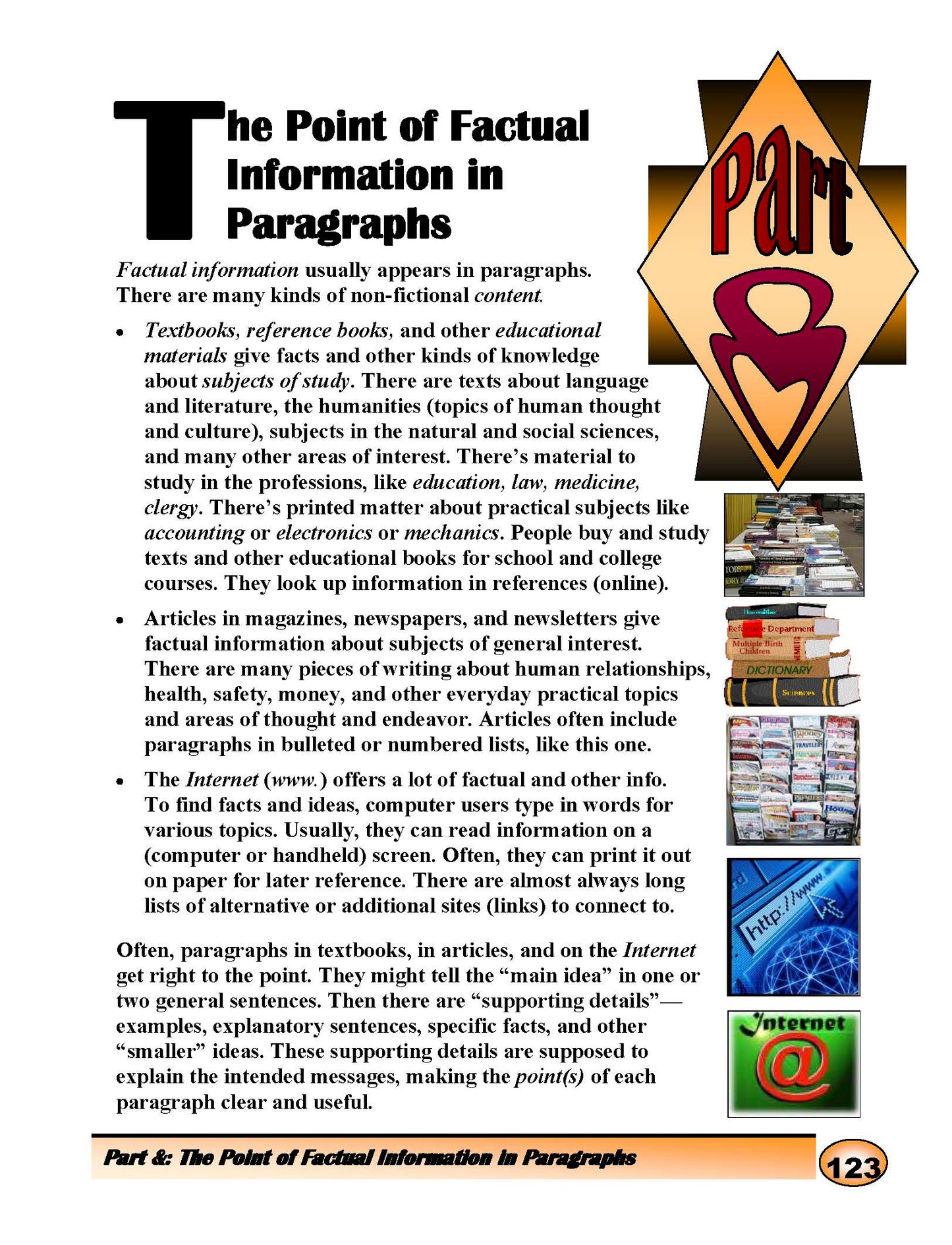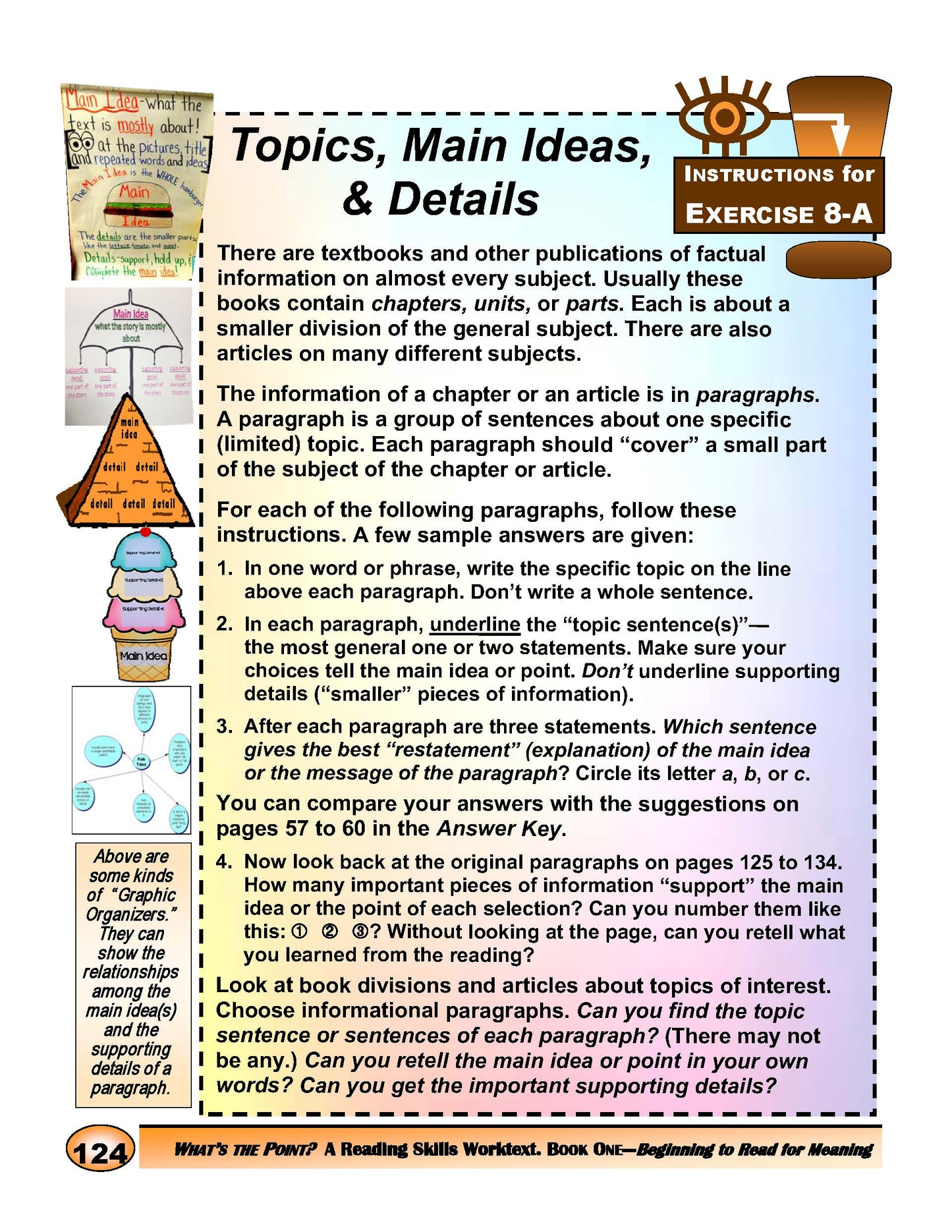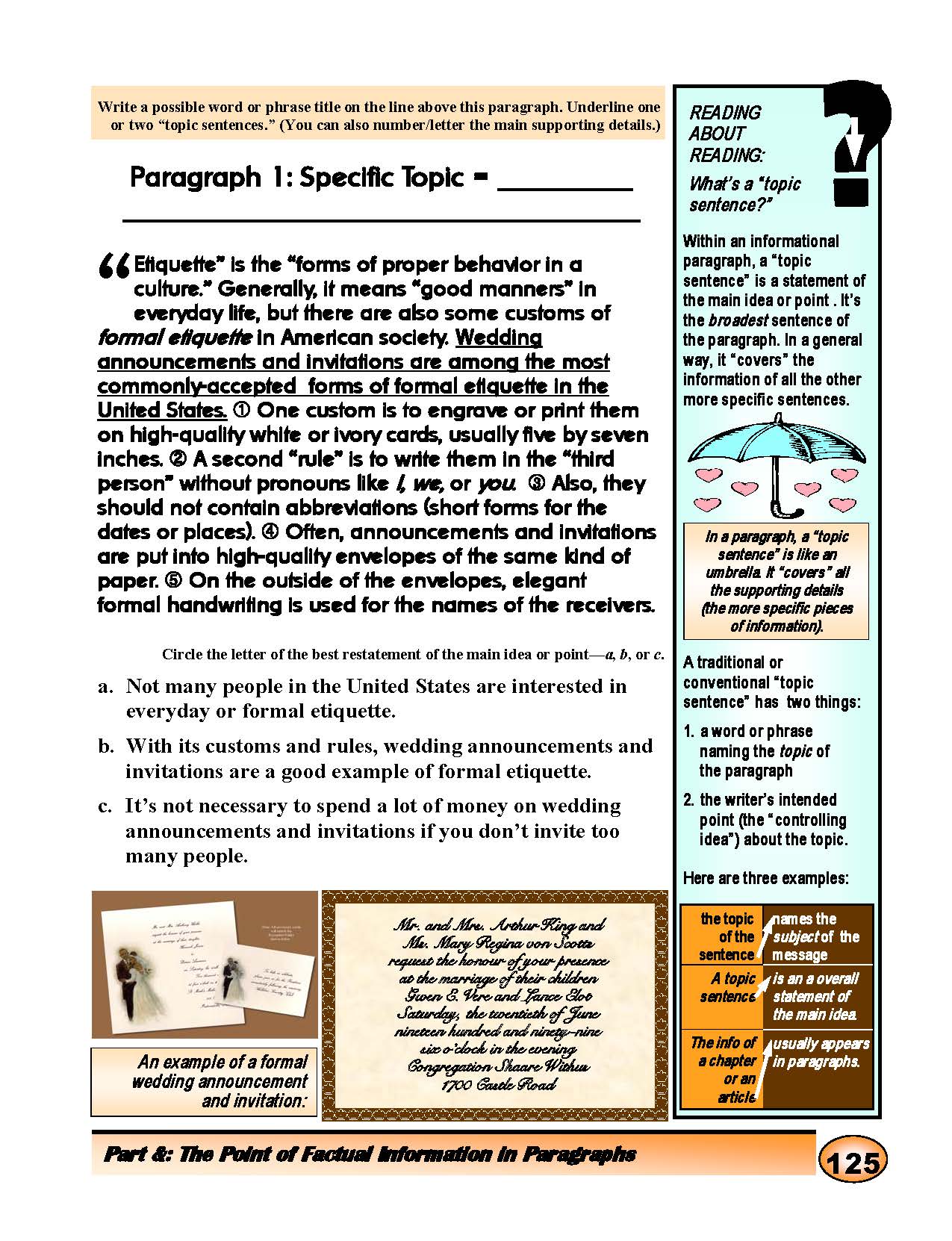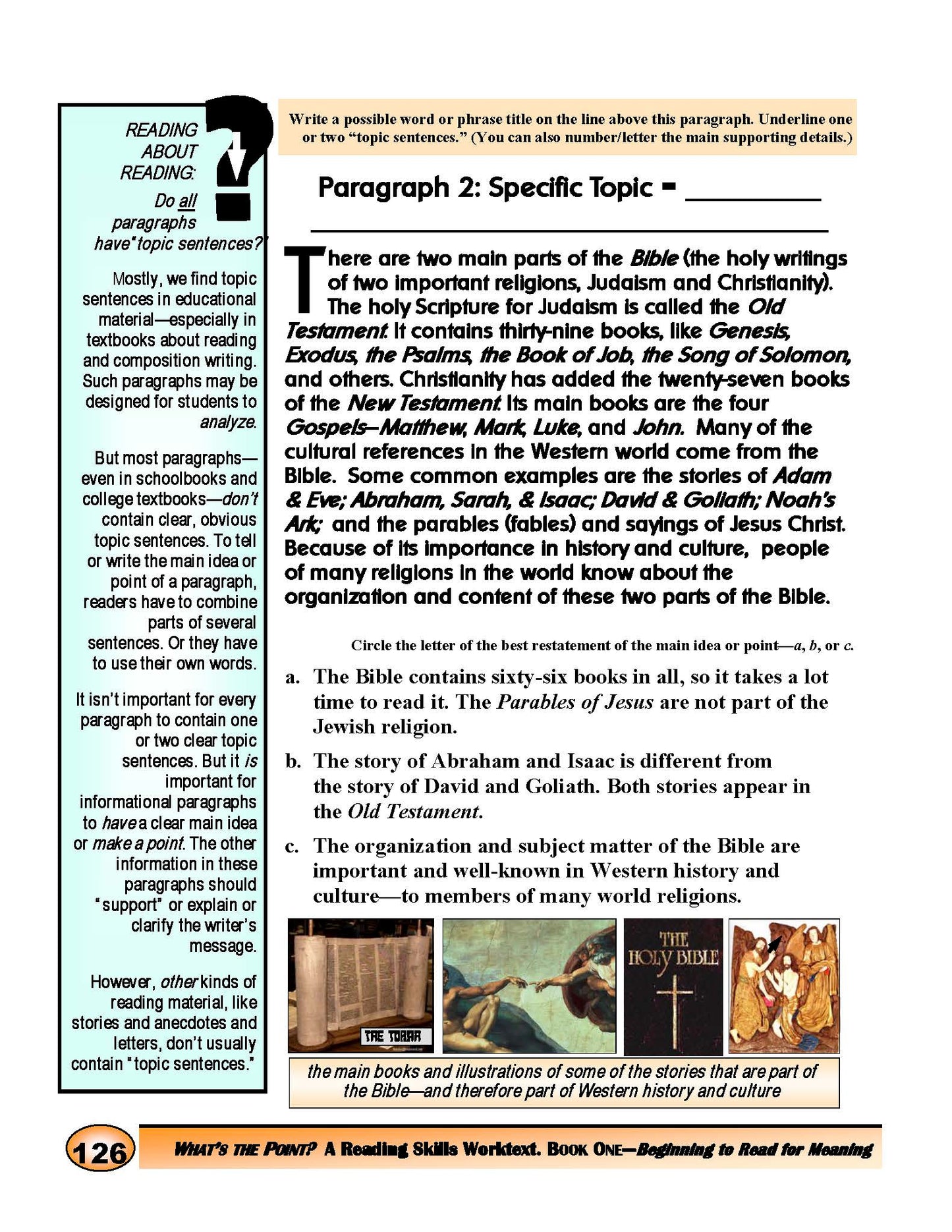1
/
of
4
Work/Life English
F-07.14 Get the Point of Factual Info in Paragraphs
F-07.14 Get the Point of Factual Info in Paragraphs
Regular price
$3.00 USD
Regular price
Sale price
$3.00 USD
Unit price
/
per
What’s the Point? Book One: Beginning to Read for Meaning. Part 8: “The Point of Factual Information in Paragraphs,” pages 123-158
36 Pages
Who It’s For: Language & Reading Teachers & Students; People Who Want a Quick Review / Summary of (or Precursor to) the Concept of Reading for (Comprehension of) Information & Ideas.
Why You Need It: People who work, study, and/or spend their time doing (practical things) need factual information to maximize their efficiency & effectiveness. At literate levels of second-language learning or improvement, the most important “Reading Skill / Strategy of Reading for Meaning” is “Getting Main Ideas + Important Supporting Detail.”
What You’ll / They’ll Do:
[1] On the first two pages of What’s the Point Part 8: The Point of Factual Information in Paragraphs, skim through the general introduction. Read about “Topics, Main Ideas, & Details” more carefully. Notice the Infographics (visuals) and other suggested learning aids in Sidebars titled “Reading about Reading.”
[2] On pages 125-134, follow instructions from the previous page to determine the Topics and best Restatements of the Points of ten informational paragraphs. Notice that many of these feature subject matter generally related to (language) learning in cultural contexts, such as “the Bible,” “Mythology & Folklore,” “Great Literature,” “Parts of Speech,” “Oral Reading,” “Vocabulary,” “Countries of the World,” etc.
[3] Keep in mind skills you used for previous selections to understand what’s important in Paragraphs 1-10. Then consider the idea of using “Main-Idea Questions & Answers” to promote reading comprehension and learning effectiveness. Use its pedagogy and follow its steps to get the most out of Articles 1-8 that follow. On practical “how-to learning” topics like “Getting a Sense of Direction,” “Six Ways to Stop Smoking,” and “Memory Improvement,” these exhibit a common pattern for organizing text: each begins with an intro and proceeds to list important points that supports its key message. In exercises that follow (on the next page), it should be easy, then, to complete a comprehensive “Main-Idea Question,” to put salient answers in numbered or bulleted lists, and to compile a short but complete summary.
Couldn't load pickup availability








